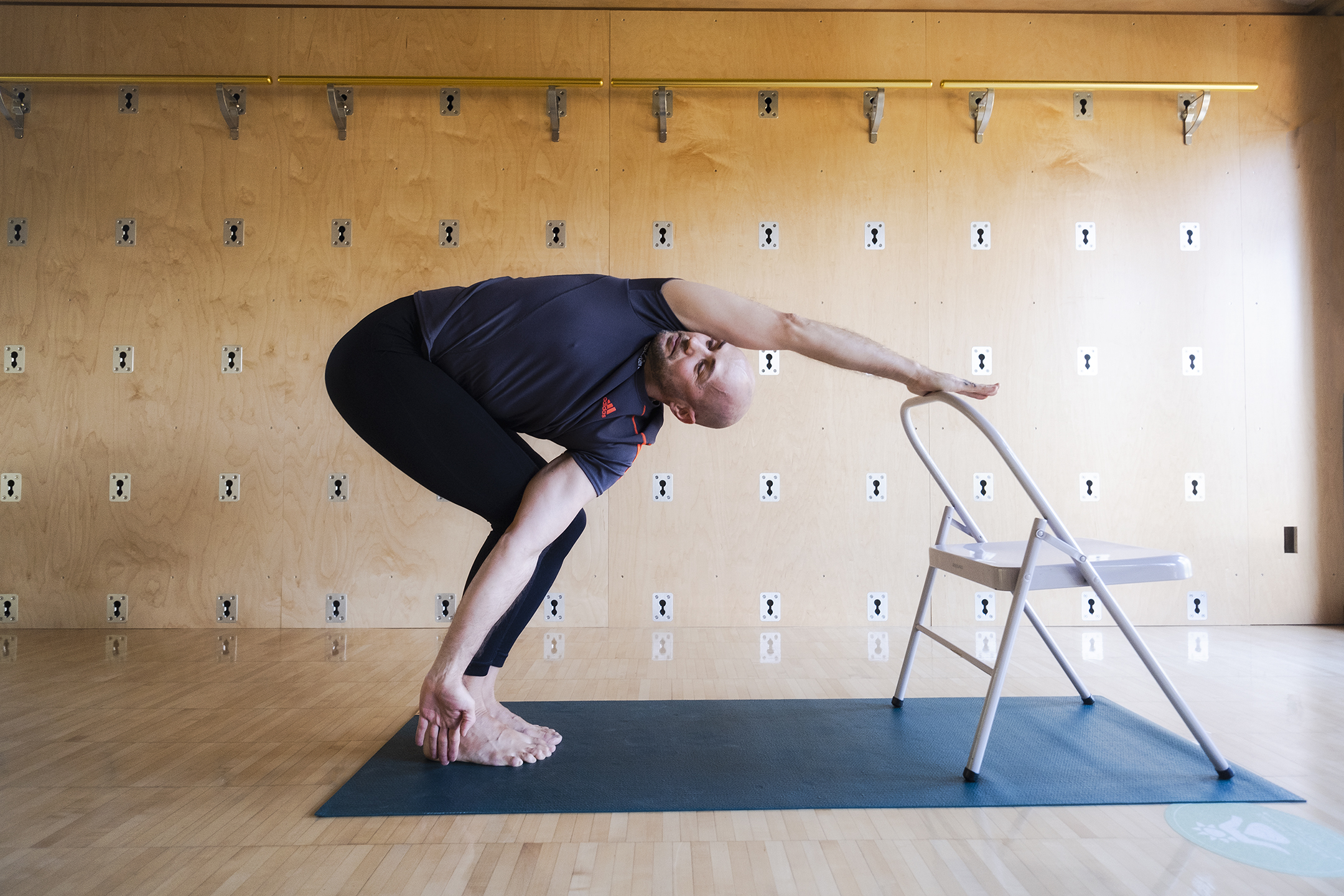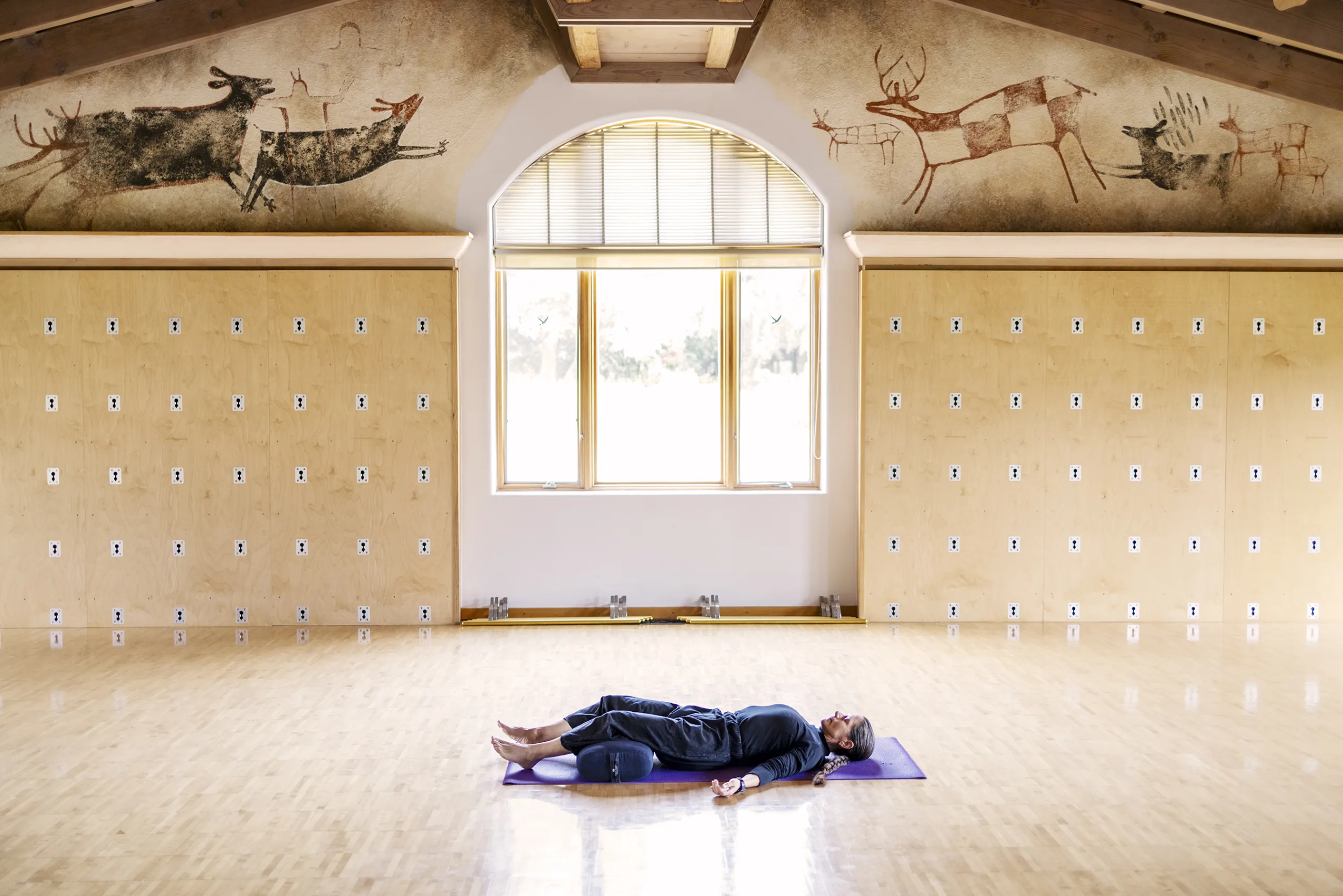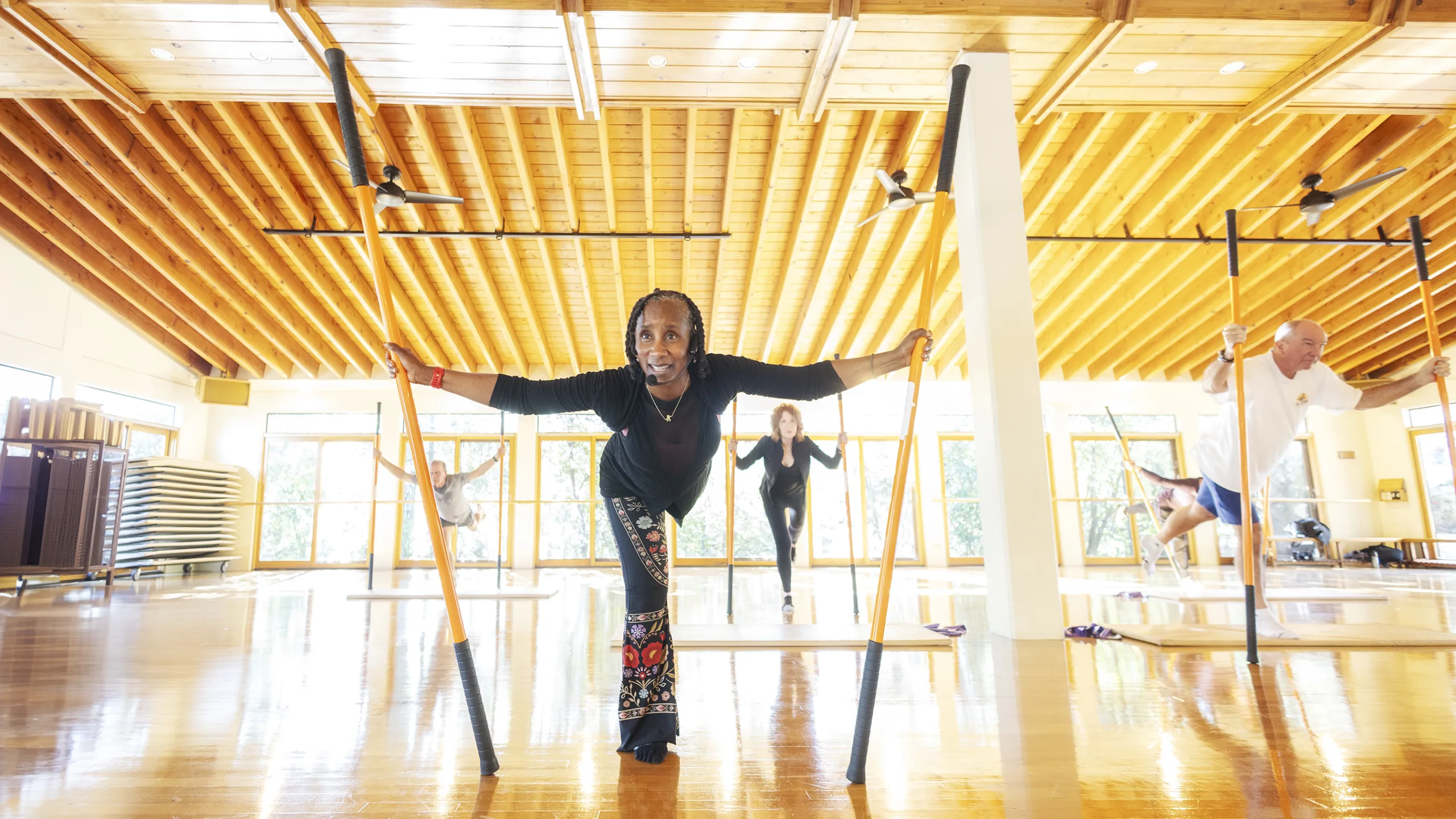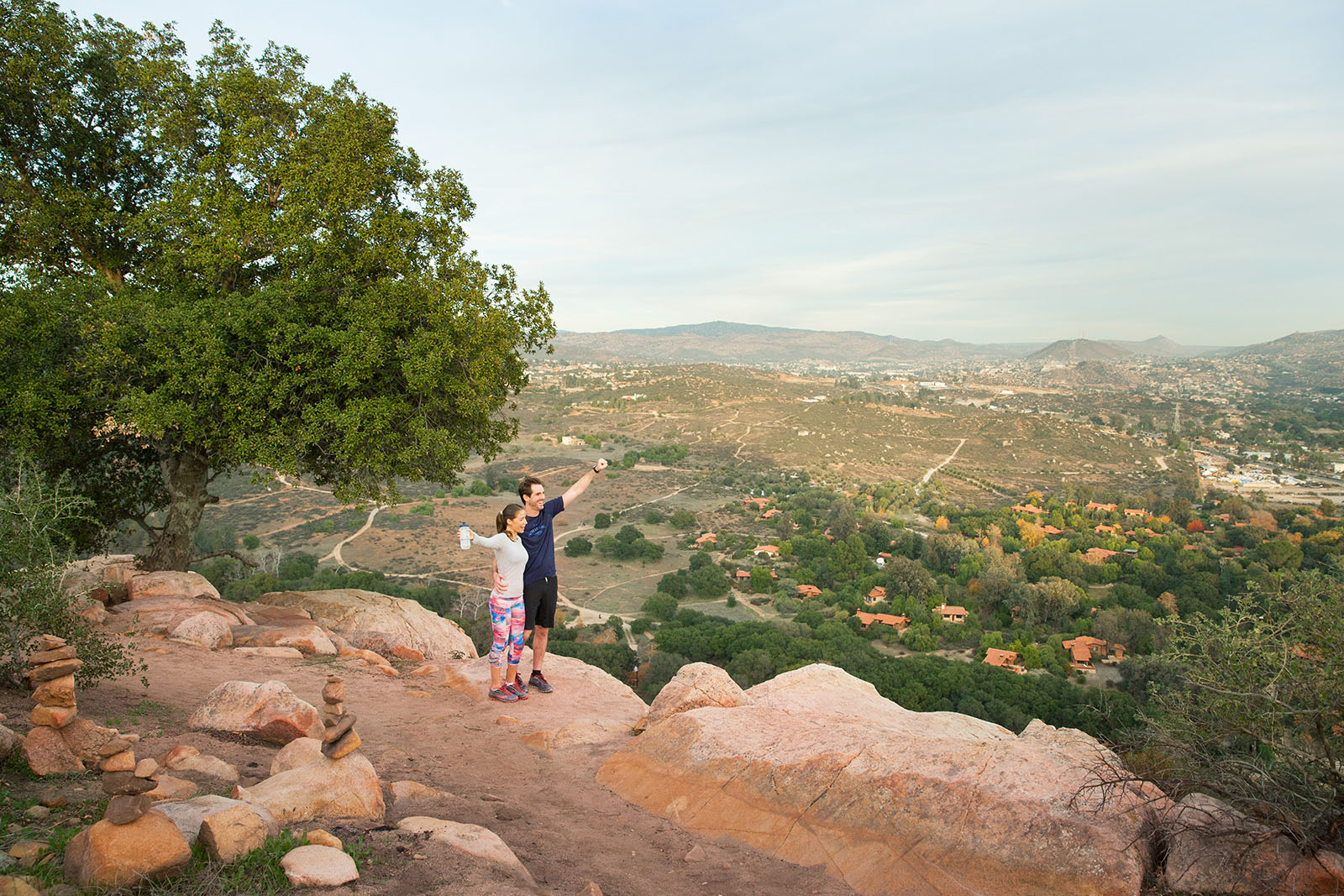Transfer Your Awareness

A gentle breeze blows through Montaña Gym at The Ranch. The sliding doors are open, and there are a dozen of us standing on our spots, which are spread out across the large studio. We’re here for Yoga 2 with Ranch Instructor David de la Paz. The focus is on slow transitions between asanas and micro-adjustments. During this 75-minute class, we use a mat, a chair, a blanket, and yoga blocks to assist us with balance and holding poses. I am skeptical about the chair.
“The chair,” David later told me, “was introduced by B.K.S. Iyengar himself. He came up with new props to facilitate the execution of each pose. I got used to always having a chair, whether I needed it or not. It was handy if I wanted it. But then, I realized we spend most of our lives sitting up and the chair is part of our lifestyle. It becomes second nature to have because it’s always there for us. You use the chair so you can focus your attention on the poses and make micro-adjustments.” The chair made more sense. Instead of thinking of it for people like me who can get off balance in yoga, it allowed me to really focus on the precision of the poses.
We move slowly between each pose and hold them for longer than in other classes I’ve attended. “The whole transition from one pose to another is much slower than in other yoga traditions. It’s more about perfecting the geometry and alignment, and quality with micro-adjustments. We try to understand each pose at a deeper, cellular level. So, when you practice Iyengar Yoga, and do downward dog, it’s not just the outside of your frame that needs alignment—each cell in your body is moving into alignment.”
“You scan your body, and by that, I mean you bring your awareness to different parts individually, from your toes to your ankle, from your ankle to your knee, from your knee to your hip, and on up your body. By scanning your body, your attention is limited to each piece or part of your body. It’s really hard to get a feeling of the totality of your system at once. And you begin to make micro-adjustments.” I embrace the chair more heartily at this point. I feel like I can focus on the pose with less fuss or distraction while trying to balance. “Maybe you notice one of your toes lift off the mat, so you adjust, so it’s also baring some weight. Then you move on through your body. You need time to scan each part of your body, so you have to hold each pose for longer.”
We start with standing poses and use the chair for balance, and then we move to seated poses and lie down on our mat. We use our arms (there are no downward dog poses) to focus our attention on building a strong base, strong legs, and increase mobility in our hips. The classes that focus on the upper body stretches for the scapulae are offered earlier in the week.
David’s gentle voice is positive and constructive as he helps us with our transitions and adjustments. “The goal is not to have a better yoga practice. The goal is to have a better life. What’s the point for us to get on the mat every day if we never transfer that body awareness and quality of movement into our daily life? Yoga really begins when you step out of the studio. It has to remain in you; you keep that wisdom.” And with that, it is time for lunch.
There are 30-minute classes, 45-minute and extended time classes offered at The Ranch. See a sample schedule of a typical week.


